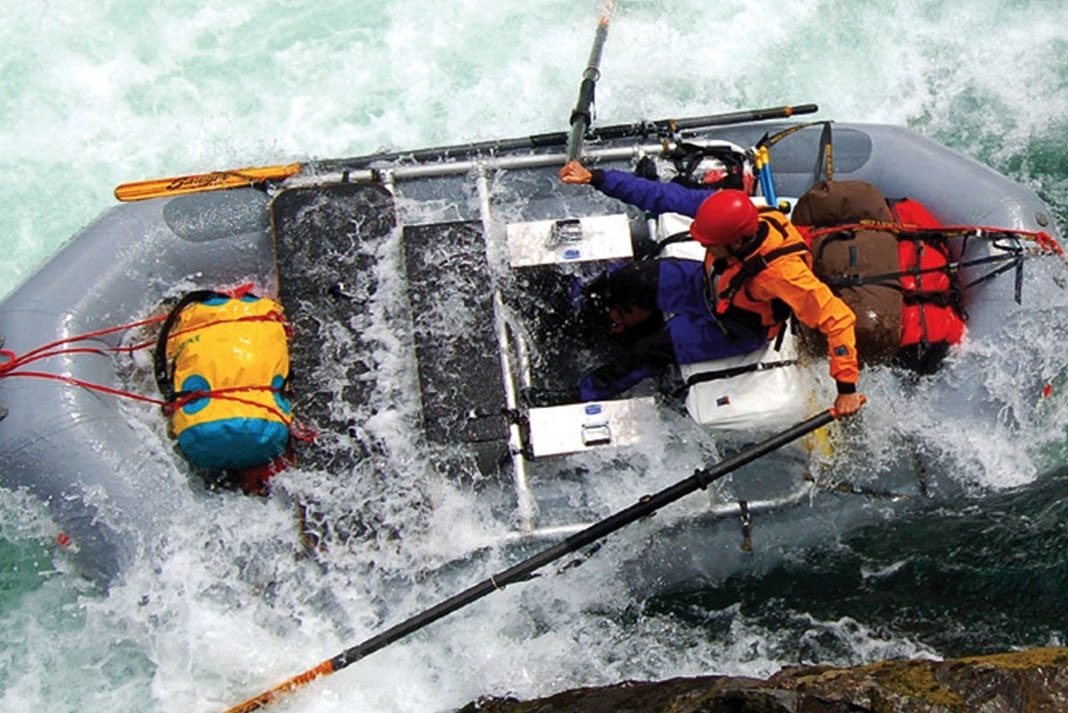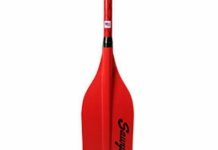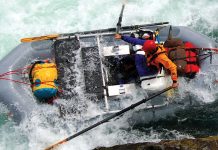You have your raft, you have your trip plan, you’ve carved out the prep time to set everything up. Now what? When it comes to mounting your raft rowing frame, most folks will tell you there are only two options.
Center mounts place the oarlocks at the halfway point along the raft’s waterline, putting the power on the pivot point. This is ideal for very heavy loads, and is the most common setup for multi-day rigs.
Stern mounts put the guide seat on the back tube, sitting high on the rocker with oars in lap. This is a typical commercial day trip setup, where the guide wants to keep the clients in view and away from the oars.
The fact is, the typical recreational rafter’s boat is not loaded with three weeks of food and gear, or with six to 10 passengers.
For a day trip or weekend, a centre mount will likely place passengers forward of the oars, making the raft bow heavy. With a stern mount, you can’t back ferry and the guide’s power is lost in flexing the raft’s rocker, rather than turning or moving the boat.
Figuring out a raft oar setup
The ideal position lies in between.
For a light gear load and a couple of passengers, placing the oarlocks two-thirds along the waterline with the guide seat in front of the stern rise makes for a balanced and predictable ride. The pivot stays near the centre of the raft, the guide can hold an angle pushing or pulling, is efficient pulling the flats and doesn’t mess with the stern rocker.
The trick is to experiment with different positions—don’t view the frame as fixed. You’ll find different setups for various load types. Move not only the frame, but also the oarlocks and seat to best position, and then mark those locations on the frame with a Sharpie. Several D-ring placements and long frame straps help keep options open.







